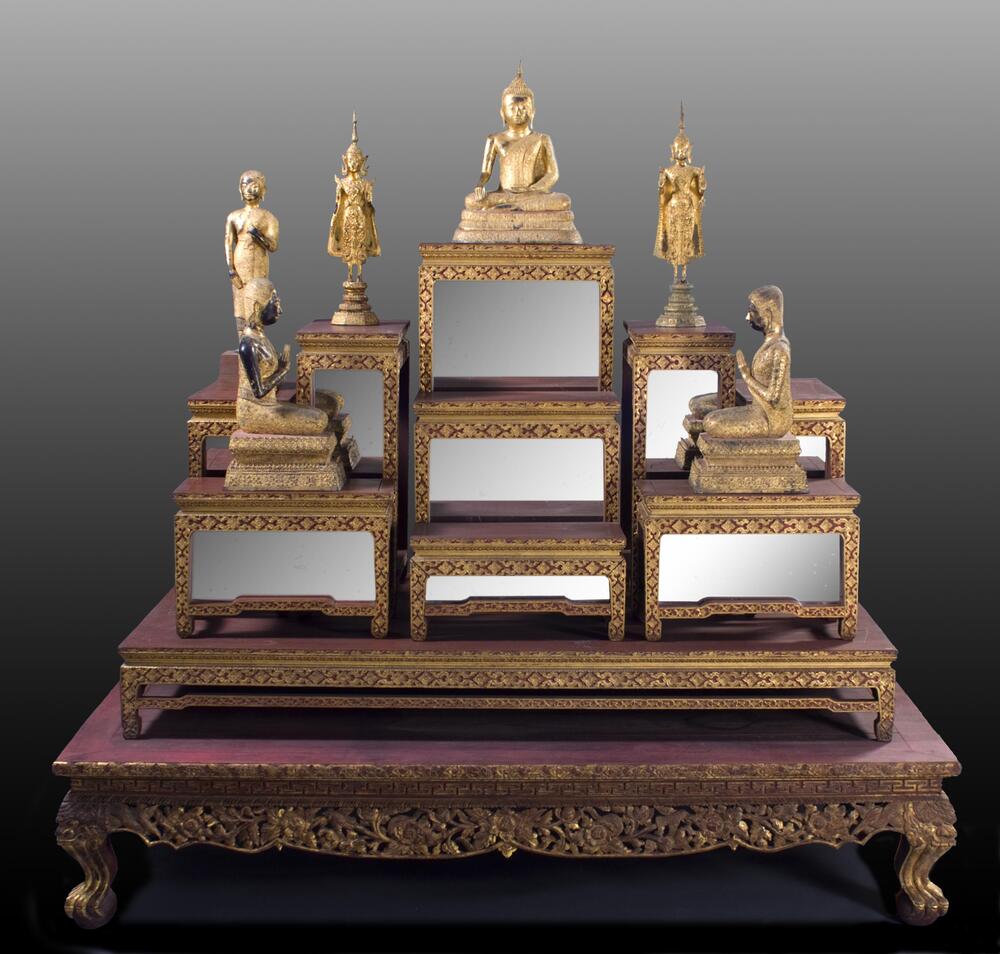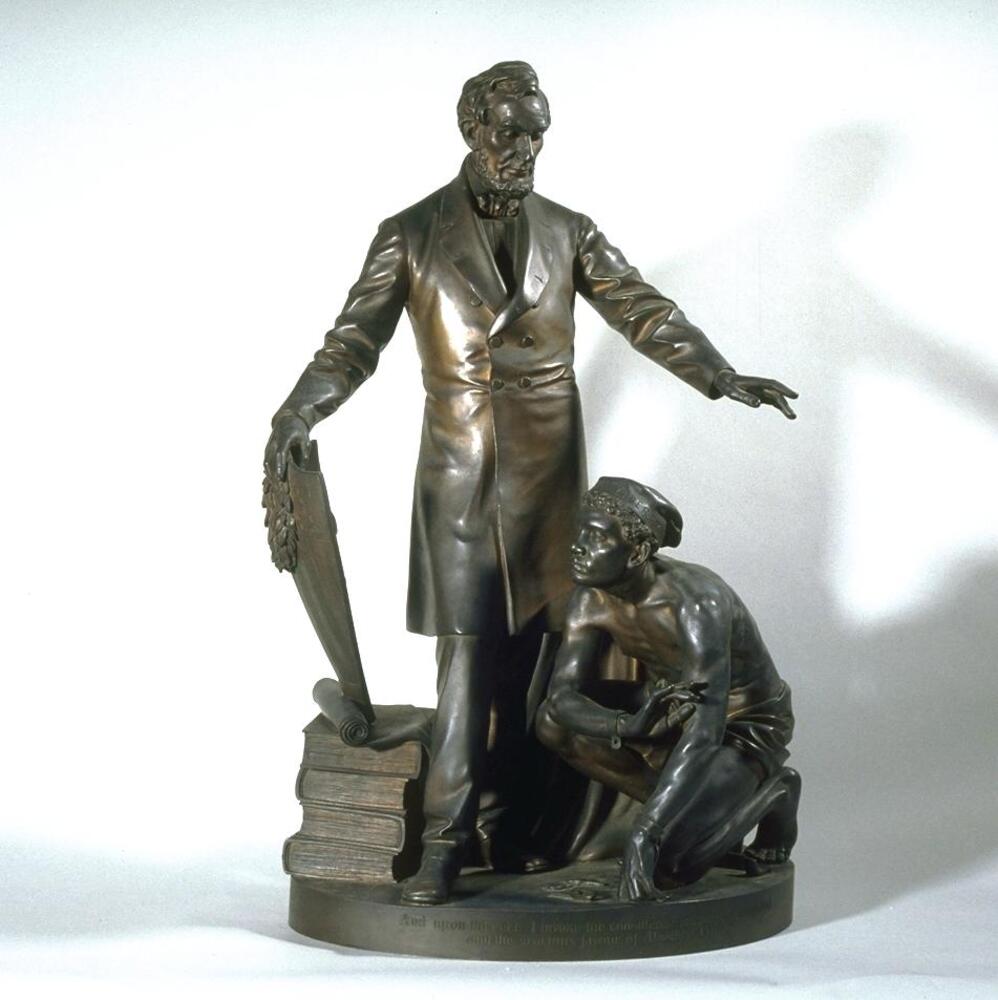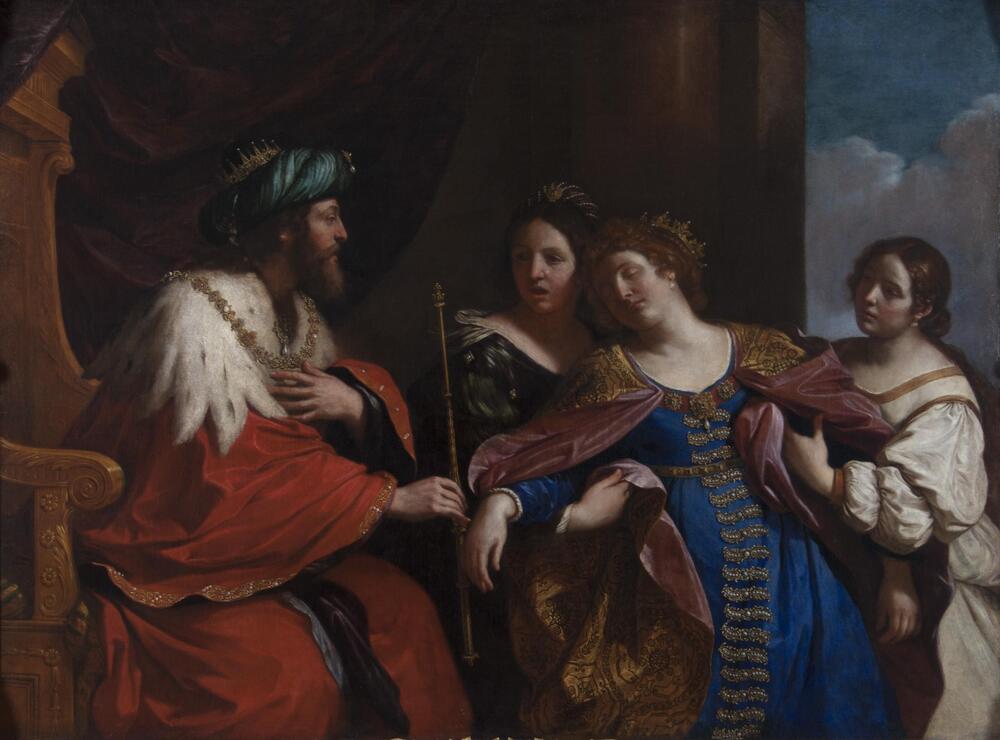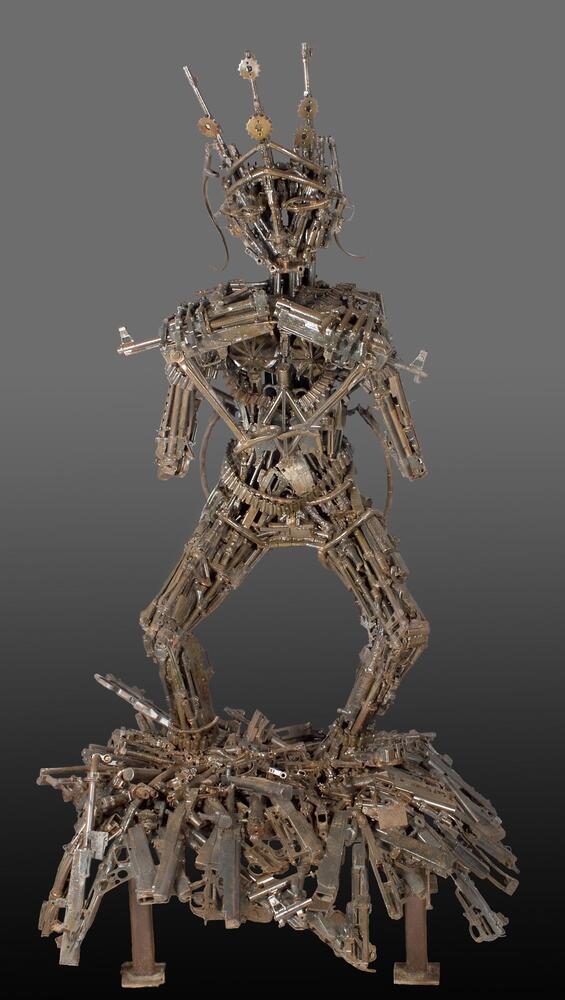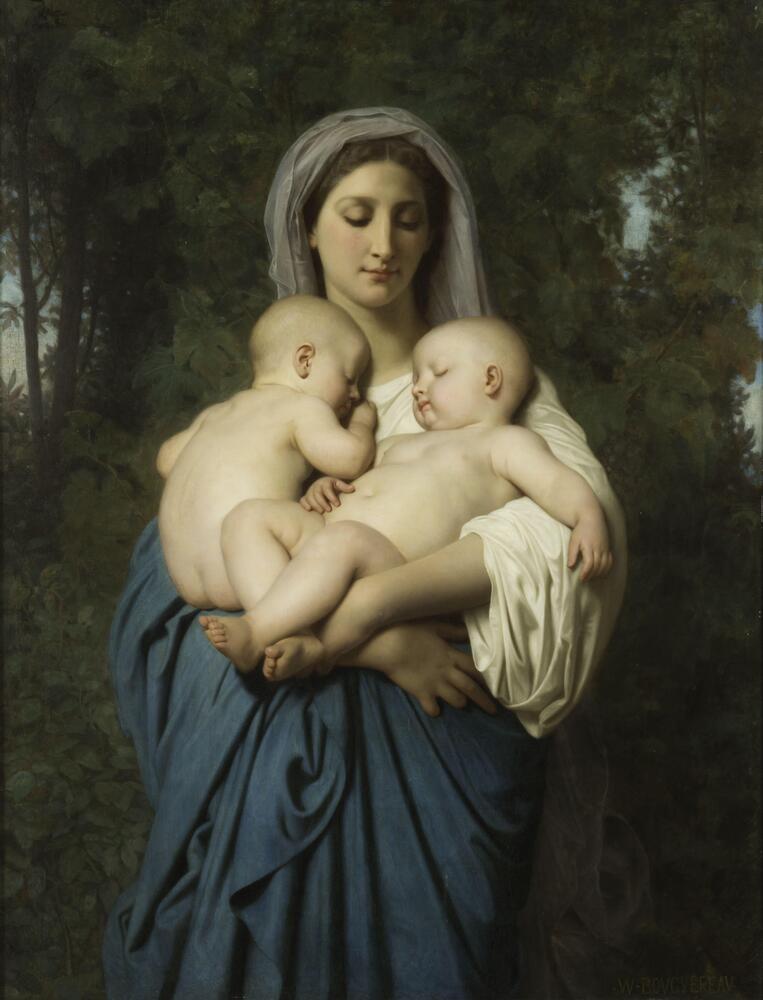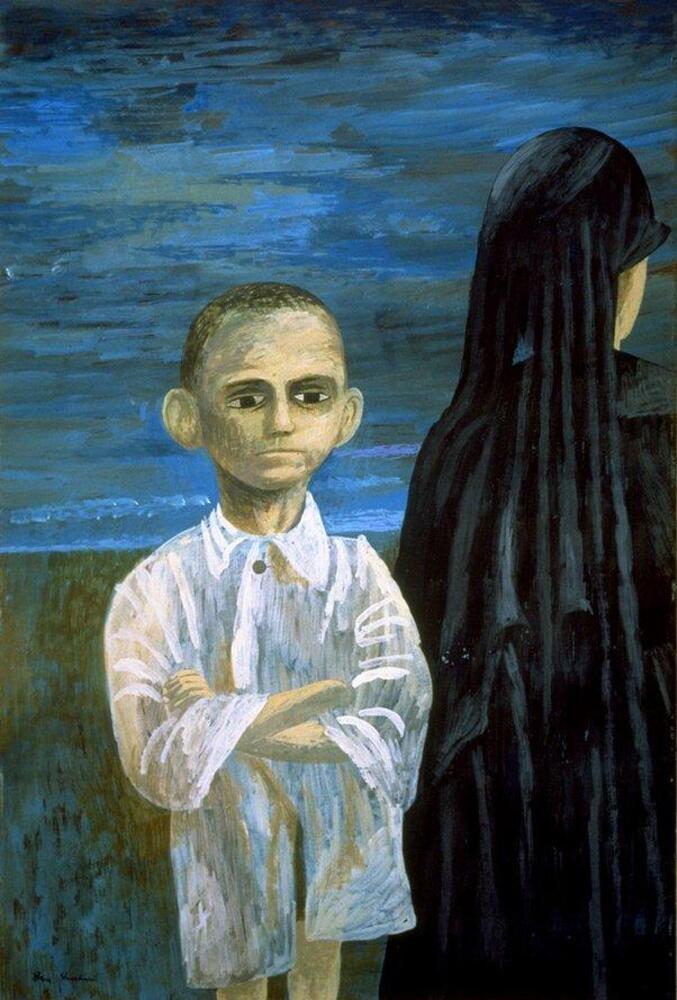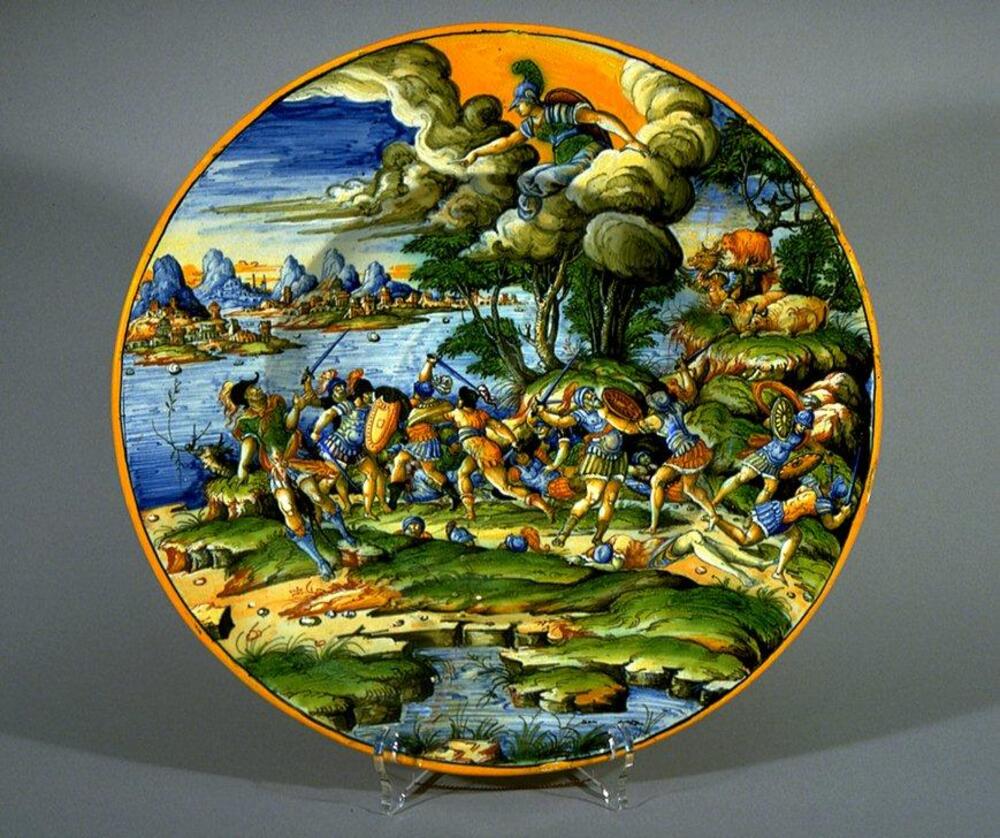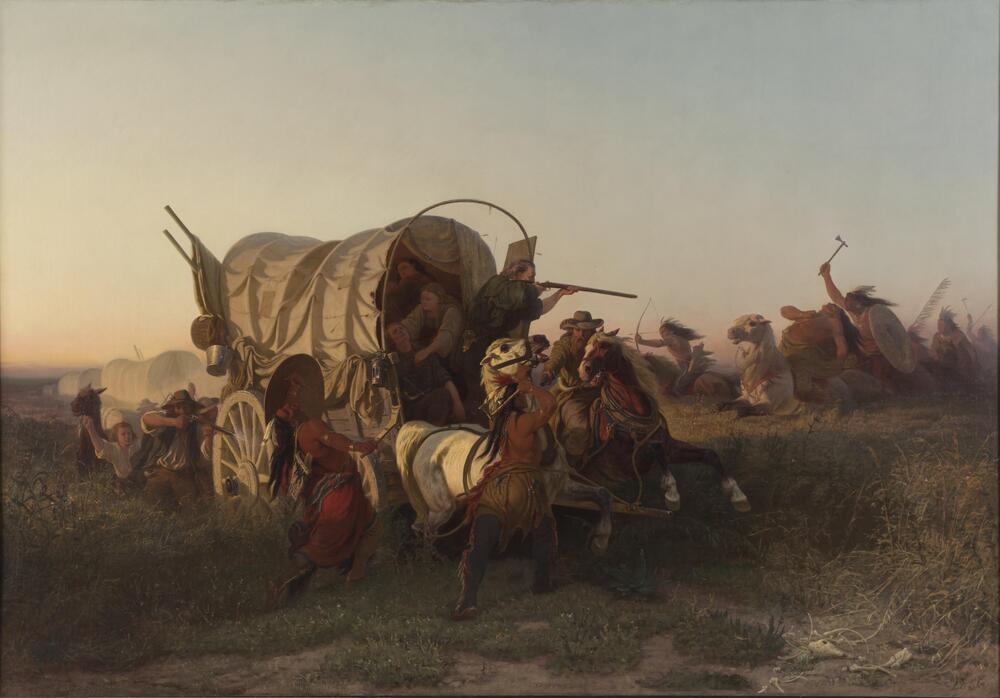Fourth Grade: Getting Along
Docent Curricular Tour
Discussion: This conceptual tour emphasizes identifying and analyzing emotions. Character qualities such as empathy, kindness, and responsibility are also highlighted by examining art that reflects communal and civic values.
Social Studies Concept: Students will consider affects of individual's action on other people, how one acts in accordance with the rule of law and in a virtuous, ethical and responsible way as a member of society
4 – C5.0.1: Explain responsibilities of citizenship (e.g., initiating changes in laws or policy, holding public office, respecting the law, being informed and attentive to public issues, paying taxes, registering to vote and voting knowledgeably, serving as a juror).
4 – C5.0.2: Describe the relationship between rights and responsibilities of citizenship.
Art Concept: Through various works of art, dialogue, looking, writing and discussing, students will gain a better understanding of themselves in relation to others; how their actions can positively or negatively impact the lives of others.
ART.VA.II.5.4: Select and use subject matter, symbols, and ideas to communicate meaning.
ART.VA.II.5.5: Analyze how art conveys ideas to express one's individuality.
ART.VA.III.5.2: Identify and defend various purposes for creating works of visual art.
Engagement Strategies for the tour:
· Artists create art-through mediums- painting, sculpture, to help you see things in different ways.
· Art can tell you a story, one in which you can explore how you feel.
· Can you remember a time when someone was mean to you? How did you feel? How about when someone was nice to you- how did you feel? How about a time when you were mean- how did that make you feel? How about when you were nice? Lets take a moment and write your responses. You do not need to share with others unless you want to.
Talking Points for the tour:
· Artists help you see the world in a different way. They tell stories through color, lines, facial expressions, gestures, clothing, setting
· Lets look at some different pieces of art and see how we can learn more about the effects kindness and anger on others and how we feel about this and how we can apply this in our own lives
Stop 1: Thai Buddhist Altar
Rationale for Selection:
· Demonstrates that kindness, compassion, caring about others overcomes “evil” in form of Mara.
· Putting others above self brings peace and calm. Altar in homes creates opportunity to be reflective and consider ways to be kind to others on regular basis.
· Dramatic, Colorful, students impressed with size and details
Possible Props/Activities/Resources
· Writing re: time you were faced with a difficult situation and overcame it. Do not need to share with others unless you choose to.
· Talk about mudras/ compare with well-known gestures, students demo mudras and lotus position-importance of lotus
· Look at facial expressions—how do they look? Compare with other Buddhas in cases along wall
· Tell story of Siddartha
· Meditation opportunity for a brief time; when you feel stressed, how do you cope?- music, reading, sports, talking with family, friends
Alternatives:
Emancipation Group- sculpture in Open Storage, Esther Before Ahasuerus, Charity/Boy, Apsara. Jason Golden Fleece, Nydia, Attack on an Emigrant Train
E props:
PBS The story of the Buddha- too long for tour but could be teacher resource
Stop 2: Emancipation Group - open storage
Possible Props/Activities/Resources
· What do you see when you look at this sculpture? Who might these people be?
· What has the artist conveyed about Lincoln based on his facial expressions, hand gesture? The slave?
· What do you think he is feeling about the slave?
· What do you notice about the way the artist/ sculptor has positioned Lincoln and the slave. Why do you think he did this?
· Writing activity in which the students imagine a conversation between Lincoln and the slave. Can they give the slave a name and write about his background/how he was treated, how he felt? Perhaps write newspaper article about slavery or a headline about the emancipation.
Rationale for Selection:
· Slavery as bullying an entire group of other people
· Lead to war with thousands of lives lost-killing of neighbors and sometimes friends and family
Alternatives:
Esther Before Ahasuerus, Charity/ Boy, Apsara, Thai Buddhist Altar, Jason and Golden Fleece, Nydia, Attack on an Emigrant Train
Stop 3: Esther Before Ahasuerus Guercino
Possible Props Activities/Resources
· Wicked Haman (Haman the Evil), Esther as heroine trying to save her people, King as powerful- able to grant her wish and be compassionate or side with Haman and be destructive.
· What do you see in painting? Look at gesture, facial expressions, clothing, jewels
· Possible writing: Write up the conversation between Esther and the King.
· Possible discussion or writing about who is favorite hero or heroine- could be famous person or someone you know. Why is that person your heroine or hero?
Rationale for selection:
· Large scale, dramatic historical painting reflecting power/compassion
· Many visual elements for students to discuss- how artist makes us feel the tension and fear
· Example of Heroine, Hero and Villain
Alternatives: Charity/Boy, Apsara, Thai Buddhist Altar, Emancipation Group, Jason and Golden Fleece, Nydia, Attack on an Emigrant Train
Stop 4: Apsara Warrior Ouk Chim Vichet
Possible Props/ Activities/ Resources
· Compare to other sculptures seen
· Discuss materials and methods of construction- welding
· Map of Cambodia/ photo of artist welding
· Compare to Esther- painting from hundreds of years to contemporary.
· Compare Esther to celestial dancers and Haman to Pol Pot
· Use wooden figurine of Apsara Dancers
· Irony of guns as a peace symbol
· Dialogue or writing-Can this be both a symbol of peace and destruction? How?
· Write questions for the artist
· Write about what you would use to symbolize war and peace; what would you use to make your Apsar Warrior and what would you call it?
Rationale for Selection:
· Irony of materials used –guns representing celestial dancers of peace and harmony
· Difference in this sculpture and Nydia (marble), Lincoln (cast bronze)
· Very contemporary piece versus Esther, Charity
Alternatives: Charity, Apsara, Thai Buddhist Altar, Emancipation Group, Jason and Golden Fleece, Nydia, Emigrant Train, Esther Before Ahasuerus
Stop 5: Charity Bouguereau 1870 Balcony and Boy Ben Shahn 1944 Mod/Cont
Possible Props/ Activities/Resources
- What does kindness look like? How has artist conveyed that?
- Concept through gesture, face, babies- healthy, rich garments, dramatic use of light
- Did women dress this way in 1870s? Going back in time to create a feeling- perhaps like religious painting
- Background- peaceful. How has artist achieved this-licked surface, flesh tones, expression of Mother
- Name Mother and babies and write story about how they lived
- Compare to Ben Shan painting of Boy- expression, physical condition, colors, clothing, health
- How do you know he might not have had enough to eat?
- How does the choice of color by the artist create a different feeling/ mood
- Name the Boy and write story about him- who might the woman be?
Rationale:
- Two very different representations of childhood: Charity/ Kindness- healthy babies with positive future vs Brutality of War-Bullying/ Anger against entire group of people-Holocaust victim with grim future
- Compare Boy to Emancipation Group and war
- How a few people can take power and bully everyone into hating an entire group of people: relate to Apsara Warrior and the destruction of the will of people through the killing of Apsara Dancers
Alternatives: Esther Before Ahasuerus, Apsara, Thai Buddhist Altar, Emancipation Group, Jason and Golden Fleece, Nydia, Attack on an Emigrant Train
Stop 6: Jason Sowing the Dragon’s Teeth unknown artist 1500-1600 majolica plate in Randazzo
Possible Props/ Activities/Resources
- Myth of Jason and obstacles and how he overcomes them
- Look closely, describe what you see? Do you feel action? How does artist do this?
- Write up a time when you had overcome something- how did you do this?
- Are there heroes like Jason that you like- could be from film or video game?
- Write about your hero/ heroines- create a story about what they had to overcome
- Interview Jason/ write headline and newspaper article about his adventure
Rationale
- Art can be other than painting on canvas or sculpture; can be represented on items used in everyday life
- Art can convey story when people were less able to read-in 1500s
- Kids like “action heroes” and Jason exemplifies this
- Struggle of good and evil
Alternatives: Charity/Boy, Apsara, Thai Buddhist Altar, Lincoln and Slave, Nydia, Esther Before Ahasuerus, Attack on an Emigrant Train
Stop 7: Nydia, the Blind Girl of Pompeii Randolph Rogers 1861
Possible Props/ Activities/Resources:
- Story of Volcano-use the pop-up book, pictures of Ash from Volcano,
- Slab of marble- texture, temperature, difficulty of carving
- Legend of Nydia blind slave and Glaucus her owner- with whom she falls in love
- Example of person who in spite of blindness was able to save others- how did her blindness enable her to do this? How do we feel about people who may be different from us- maybe dress differently or have customs unlike ours or may be differently- abled?
- Example of someone treated terribly but overcomes this to save Glaucus
- Write story about the eruption, what was happening, sounds, sights, how Nydia saved her former boyfriend and his girlfriend—give them names- how does this all end?
- Write headline and story; interview Nydia.
Rationale:
- Kindness even when someone has been unkind to you
- Example of Heroine versus Hero
- Example of how artists express a story through sculpture
Alternatives: Charity/Boy, Apsara, Thai Buddhist Altar, Emancipation Group, Esther Before Ahasuerus, Attack on an Emigrant Train, Jason and Golden Fleece
Stop 8: Attack on an Emigrant Train Carl Wimar 1856 Apse
Possible Props Activities/Resources
- What do you see in painting? Look at gesture, facial expressions, animals, activity, clothing, weapons
- How are Native Americans portrayed—the settlers?
- Possible writing: Write two points of view- one from Settler, one from NA as to what is happening.
- Write a story about one Settler or Native American
- Interview the settler and the Native American
- Use cubes and material in front of the Painting
Rationale for selection:
- Large scale, dramatic historical painting reflecting theme of one group of people punishing another group/ seizing power based on background and perceived authority over others who are different
- Many visual elements for students to discuss- how artist makes us feel the tension and fear
Alternatives: Charity/Boy, Apsara, Thai Buddhist Altar, Emancipation Group, Jason and Golden Fleece, Nydia, Esther Before Ahasuerus
Part of 1 Learning Collection
<p>Docent Curricular Tour</p>
Rate this Resource
AVG: 0 | Ratings: 0
& Author Notes
Creative Commons by-nc-saLast Updated
April 27, 2017 12:30 p.m.Report
Reporting Policy
